Can you imagine a world without pictures?
What would our world be like today without the invention of photography? In just under 200 years, the process of taking pictures went from the required 8-hour physical exposure per shot to a mere millisecond pixelated photographic capture which can be instantly seen via a screen – or sometimes, a phone-screen.
Every second of every day, people are snapping, sharing, and viewing photographs. The art of picture-taking has completely taken over the way we go about our everyday lives. It has now become part of our daily existence.
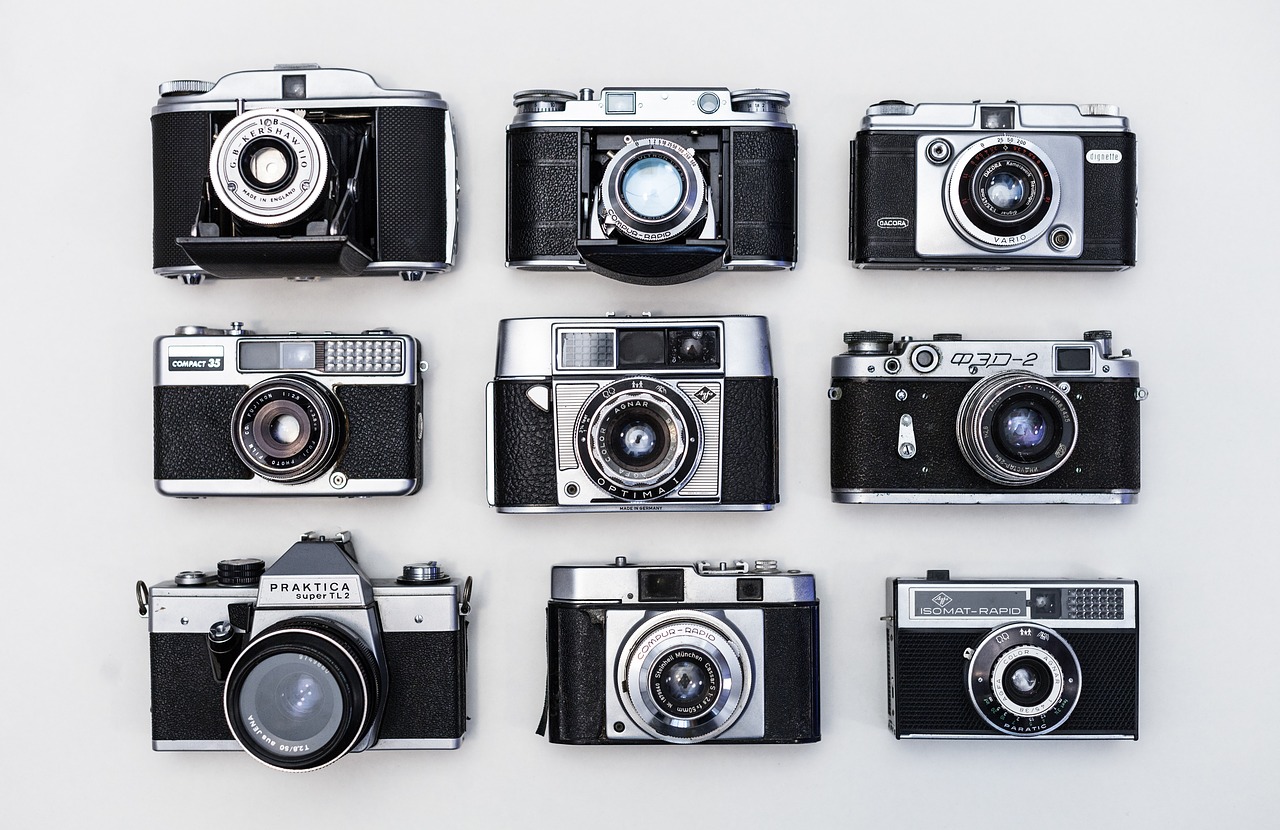
Photography has its roots in the 1820s when people began experimenting with light and how it reflected on surfaces. The human interest to capture real-life images is what would later become photography as it is known today.
How did photography begin?
The earliest documented photograph known to humanity was made by French inventor Niceiphore Niépce. It shows his view of the countryside and buildings on his Le Gras estate as it was taken in 1827 from his high window. Referred to as “View from the Window at Le Gras”, the photograph is considered the oldest surviving camera image. The picture supposedly took 8 hours to process, expose and develop.
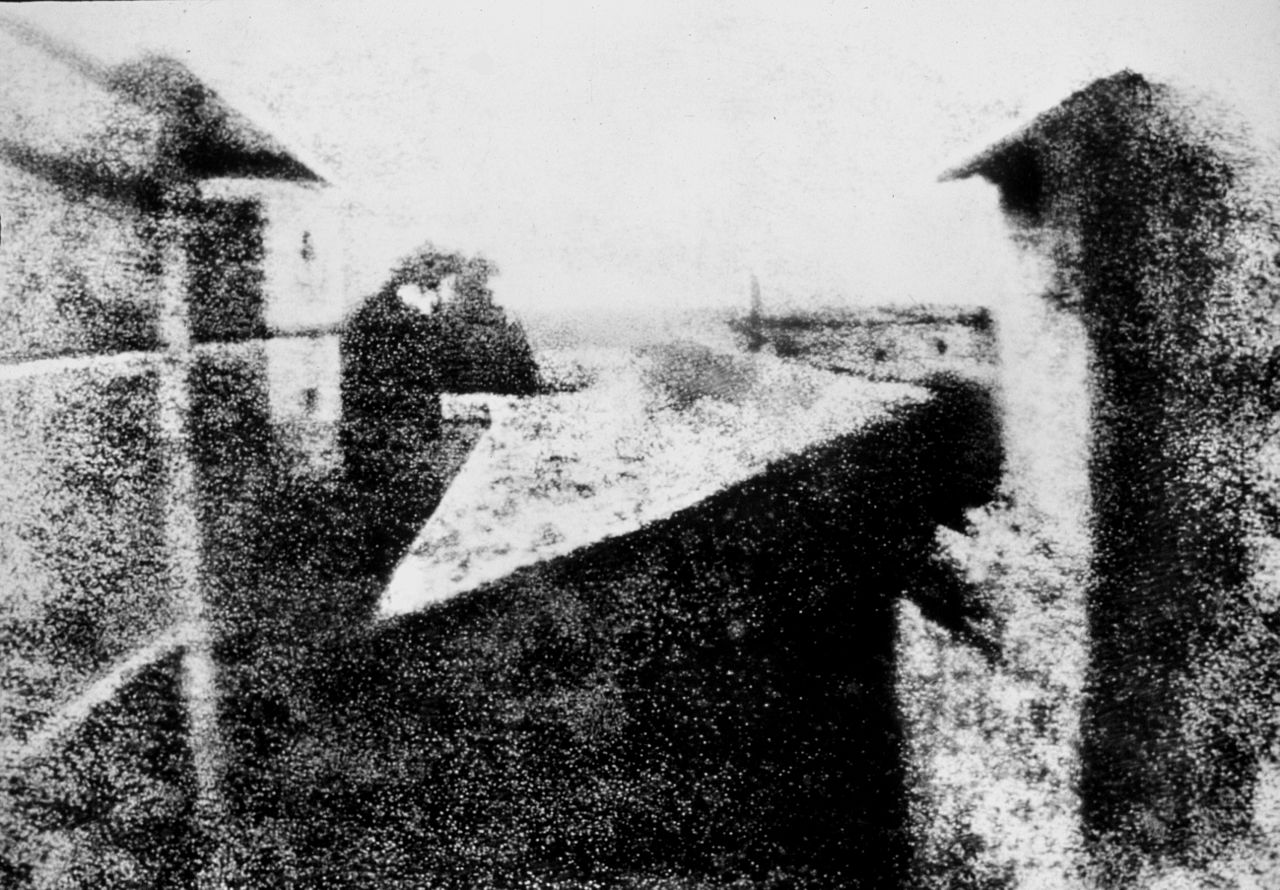
(View from the Window at Le Gras)
However, historians broadly acknowledge that photography had its real beginnings during 1839. The name photography was coined and derived from the Greek words “photos”, which meant light; and “graphlein”, to draw. The literal translation of photography is “drawing with the light”.
The birth of photography as a medium is attributed to Louis Daguerre – a fellow and friend of Niépce. Daguerre is heralded as the inventor of the daguerreotype process which used metal or glass plates coated in light-sensitive chemicals to expose images.
Daguerre’s photographs took a few minutes to expose. It also produced a good level of detail which dramatically improved the earlier image accomplished by Niépce. Almost immediately, scientists and journalists started using the medium as a way to document, preserve, and analyse images. Photography swiftly swept to the side even the most realistic drawings and paintings as it effectively achieved in minutes what the most skilled realist artists could not in hours.
Gradually, society began integrating photography into everyday life. Wealthy families had their family portraits taken. Photography studios started to appear, and the medium – as we know it today – had established itself.
The popularity of photography
By 1887, celluloid film was developed thereby revolutionizing photography. Metal plates and glass pates were no longer used. Instead, small, compact, and lightweight film was utilized because these were cheap and readily available. Eventually, numerous families began acquiring photographs thanks to a number of studios who offered family portraits, and photo services.
During this era, photography became hugely successful and popular. The distribution, awareness, and use of photography became commonplace.
By the mid-1950’s thanks to the development and use of photo chemicals, black-and-white as well as color photographs were being produced. This again marked a massive advancement in the field. It also solidified photography’s hold on society. Anyone and everyone was now using photography at some point in their life.
Between the ’50s and the ’90s, postwar countries started integrating plastic into their consumer products. Photography also followed suit. Disposable cameras allowed everyone to shoot pictures without the need to own an expensive camera. Holidaymakers and enthusiasts were quick to purchase such cameras.
The continued advancement of photography as a discipline was aided by the advances of technology. Even in the 21st century, the bond between photography and technology continues to grow strong.
The advent of film-less photos
In the early 1990s film started to decline in popularity because digital cameras took center stage. Users could now see images they want to take pictures of directly on digital LCD screens. They can also store, upload, and view pictures to computers without printing them out. They could also discard images they didn’t want.
Since then, companies have gone on to build bigger, better, and more powerful cameras. Even today, photography-related technology is still evolving.
The development of the DSLR has been critical. These large cameras have substantially big lenses that are able to capture the most nuanced and previously unattainable images. Detail quality is now at the point where cameras are able to see more than the human eye.
However recent inventions, such as the mirrorless camera as well as the GoPro, continue to show how photography is evolving constantly in terms of equipment and use.
Today, almost all of western society have cameras built into phones. Taking pictures is now part of everyday life. It’s no longer a privilege. It is also not costly to own a camera.
Photography has evidently grown and developed over the past 200 years and shows no signs of slowing down. With a whole host of new editing software being launched annually, photography is sure to be more compelling as the years roll by.
The evolution of cameras
Photography has adopted and used technology to its benefit more than any other medium. Besides the creation of editing software and platforms to enhance photos, developers and engineers have been busy making cameras sharper, faster, and more compact.
Most people in the Western world now have cameras in their pockets and in their smartphones. We have CCTV surveillance littered across the world’s city streets. The days of film photography are long gone. This is a far cry from how cameras used to be.
The Daguerreotype
The earliest prototype camera was called the Daguerreotype and was developed in 1838. It took around 8 minutes to expose images. Below is an example of an 1837 daguerreotype titled “Still Life”.
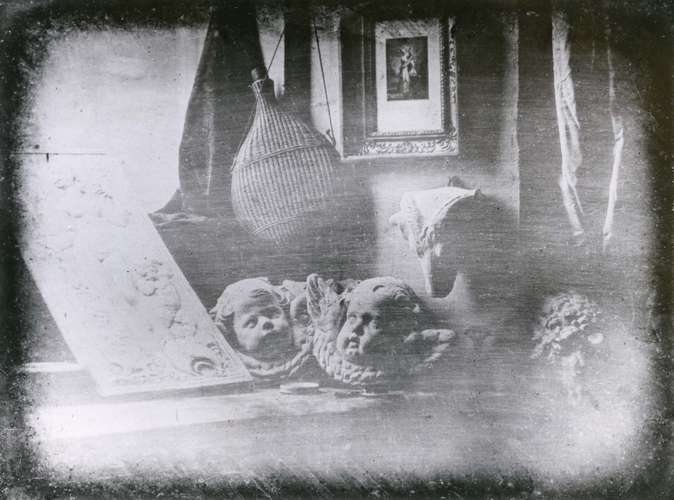
The Calotype
Later on, the prototype was improved by Henry Fox Talbot. He released the Calotype which used different chemicals to expose the image. This lead to the creation of the first negatives (black became white, and so on). Below is an example of an 1863 Calotype.
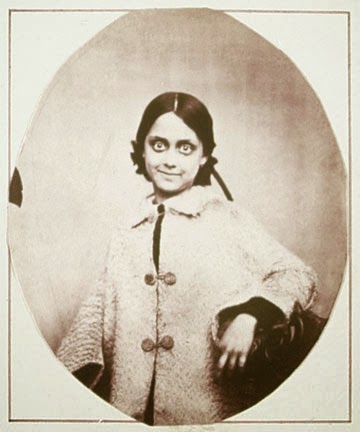
George Eastman’s Kodak
Between 1840 and 1885, various forms of exposure were tried and tested to improve image detail retention as well as exposure time. In 1885, George Eastman’s experiment with shutters greatly improved the detail retention of cameras.
By 1888 he started selling his first camera called Kodak. In 1890 he had begun improving his initial camera and so released the brownie – a more simplified camera that took a quick snapshot thus improving the camera’s exposure time.
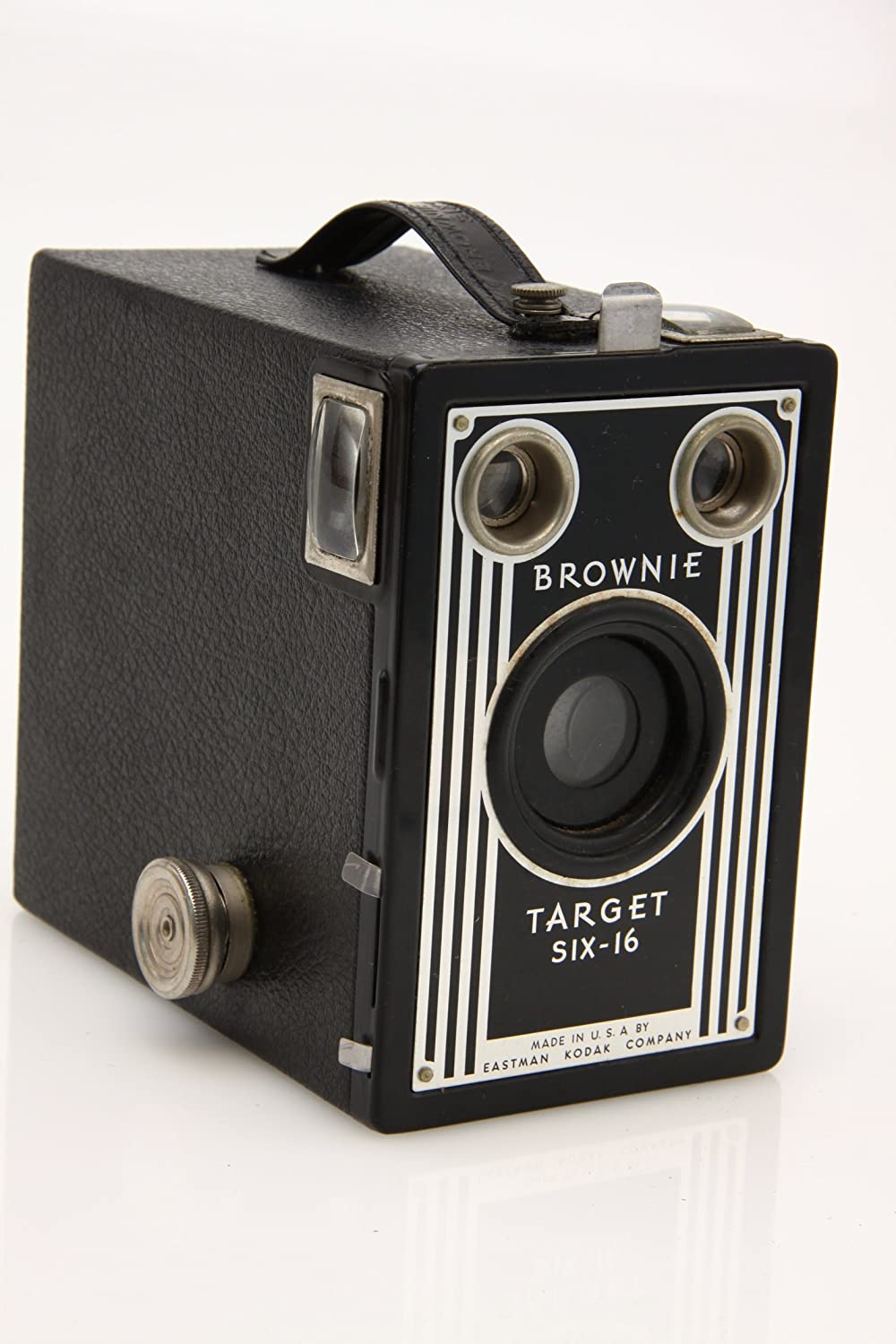
By the turn of the century, a wide range of companies and manufacturers had started looking at, reviewing, and developing their own cameras. Between 1905 – 1913 the 35mm film camera was introduced by a wide range of companies.
Leica’s 35mm camera
Notable 35mm launches include the Leica mode – a company that still exists today and makes fully digital cameras that mimic the appearance of this original model. The 35mm camera was handy, quick, and more reliable than any of the previous cameras that had been developed.
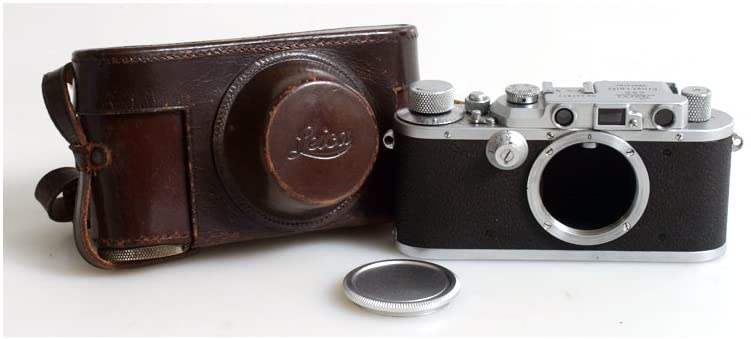
The Nikon SLR
By the 1930’s Japanese brands such as Nikon also started making cameras. The SLR was launched in 1933. It would later revolutionize image-capturing abilities. The new range of SLR cameras captured a heightened level of detail that previous cameras were unable to capture. They offered users more settings and experimentation so they could afford more room for individuality.
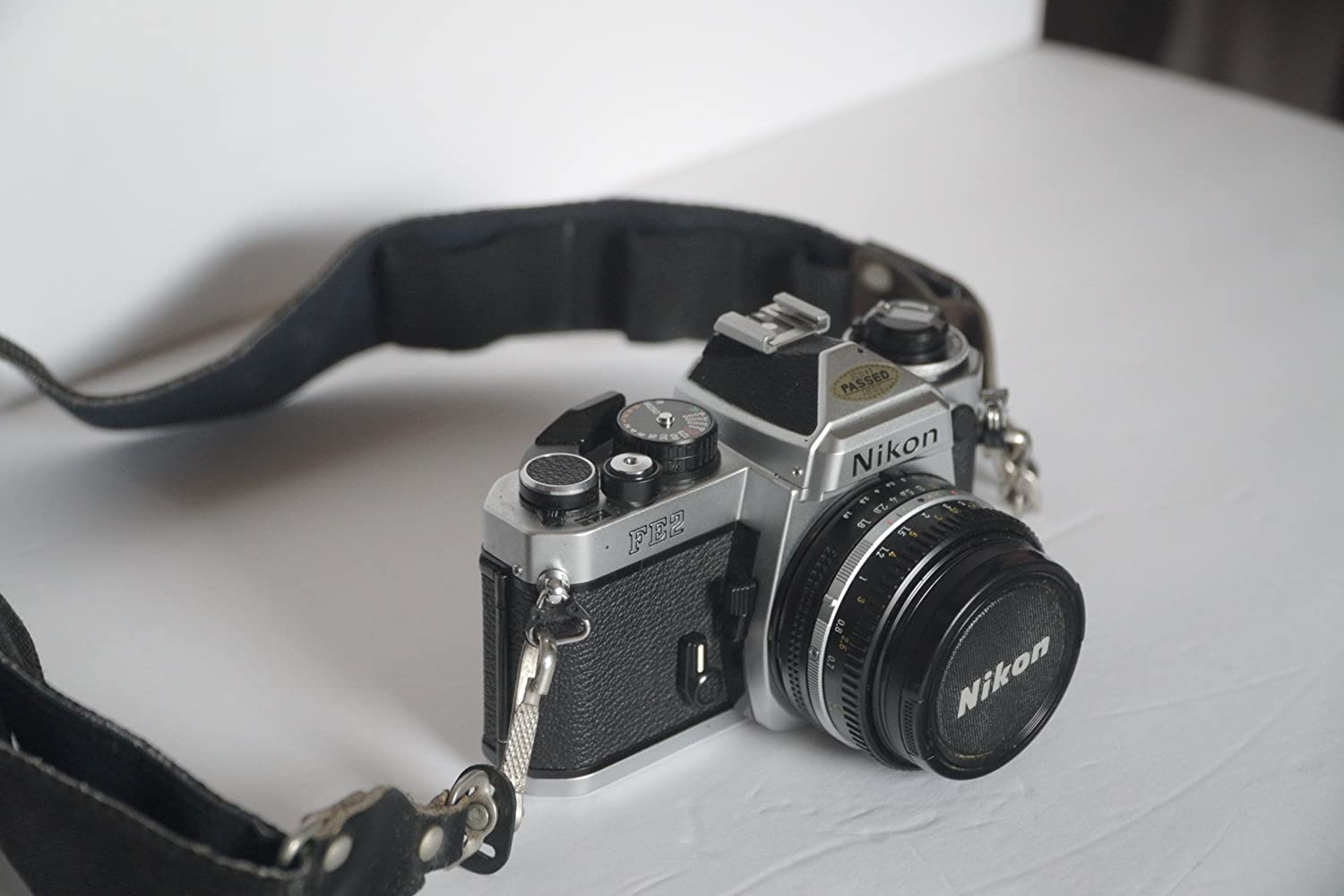
This era also saw the rise of a number of photography-based artists. But by 1948 a new wave of instant cameras once again changed the industry of photography. These cameras were readily available, cheap, and photos were printed instantly. These proved to be a great hit with the public and were extremely popular.
They introduced photography as a non-exclusive inexpensive medium that everyone could use and be introduced too. By the 1960s fully automated cameras had been introduced. Technology, once again, had made it even easier for anyone to take good quality pictures.
The entry of digital cameras
In 1975, technological advances within and outside of the photography world started to change the way images were captured, stored, and shared. In the mid-1980s the first series of digital cameras were released.
By the end of the 1980s and during the early 1990s, the digital SLR camera was launched. It would signal a new era of photography. Other cameras have been made since, but most items manufactured were accessories and add-ons to new and updated DSLRs that reign supreme.
Mirrorless cameras, as well as GoPro’s and smartphone cameras all exist alongside the DSLR. However, an overwhelming majority of digital photographers still opt for the DSLR.
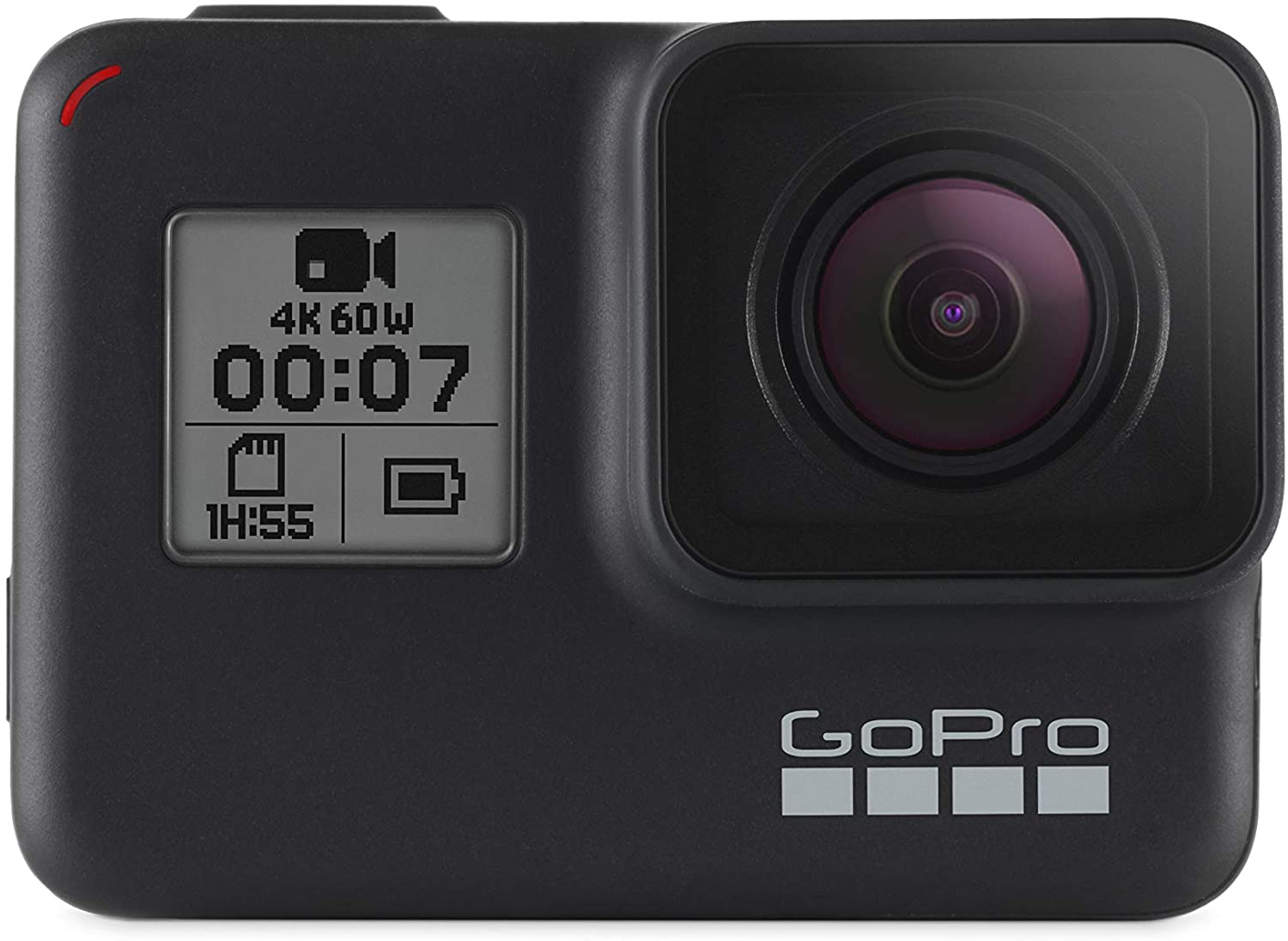
No one really knows where photography will go next especially now that Apple and other tech tycoons are adding better quality cameras to smartphones and tablets every year.
In the past 200 years, the evolution of the camera has gone through a crazy, wild and rapid process. Who knows where the technology will go? The fact now remains that the camera today is a common piece of equipment most of us use on a daily basis and will continue to.
Photography as an art form
In comparison with other art forms, photography is extremely modern. Historians note that as a medium, its earliest beginnings could be dated back to 1839. Other art forms such as painting, drawing, carving or sculpting outdate photography by centuries.
However, all that came before photography had at one point been used by their creators to mimic the function that photography performs with ease – they wanted to record events.
Literal events, representations and historical records that prove how real-life events unfold are effortlessly recoded through images. Whether you were a realist portrait painter depicting the wealth or marriage of a member of the royal family, an Assyrian sculptor or carver documenting their work, photography is an art form used to capture an event as it happened from someone’s point of view.
Photography is able to capture events as they happen in real-time. Photographers capture and store moments that are frozen in time. This unique bond between photographer and that moment is incomparable. No other medium has the ability to achieve such a feat.
Photography places a detailed mark on our existence and accurately records events as they’ve transpired. Photography has revolutionized the way we record events, document our lives, and ultimately how we interact with time. Moments that existed are now recorded, stored, and shared. They exist in and outside of time simultaneously.
As an art form, photography continues to grow, mutate and evolve. Photography is perhaps the most suited art form to integrate 21st century technology. The move toward digital photography from film, the introduction of the DSLR, and now with the smartphone camera, all establish the art of photography as a medium that will stay with us forever.
As most people now have a camera in their pocket attached to their phones, the medium has become even more widespread. The ability to create and make art has never been so easy. With social media platforms also keen to cash in on the phenomenon, it’s readily easy to shoot, upload, and share your photographic works.
Like other art mediums that have been around for centuries, photography has become an established, recognized, and renowned medium capable of moving people, exposing truth, and creating the extraordinary.
Today in the world’s most exclusive art galleries, museums, and private collections, you will definitively find photography. Photographers have experimented and pushed the limits of the medium to its extreme in a bid to create innovative, beautiful, engaging works.
One of the most important photographers to establish the medium as an art form was of course Alfred Stieglitz. The Terminal 1883 and The Coach 1893 are two of his most famous pieces.
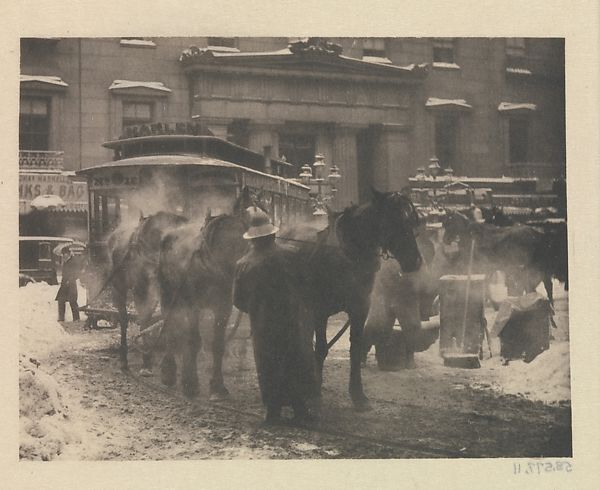
Stieglitz became obsessed with photography whilst studying in Berlin. Early on he learned about the difficult chemicals which could expose an image. He was a regular contributor to a wide range of magazines that championed photography as an art form. He is world-renowned for his contributions to the medium. He ran a number of successful New York galleries and helped establish photography as an art form early on in his career.
Henri Catier-Bresson is another photographer who is widely acknowledged as pushing the boundaries of photography as an art. Cattier-Bresson was an early user of the 35mm camera.
Art historians and photographers alike attribute the development of street photography to Cattier-Bresson who popularized the candid photograph. He toyed with temporality. He experimented with the subject and the camera to create beautiful images that depict real-life through his eyes.
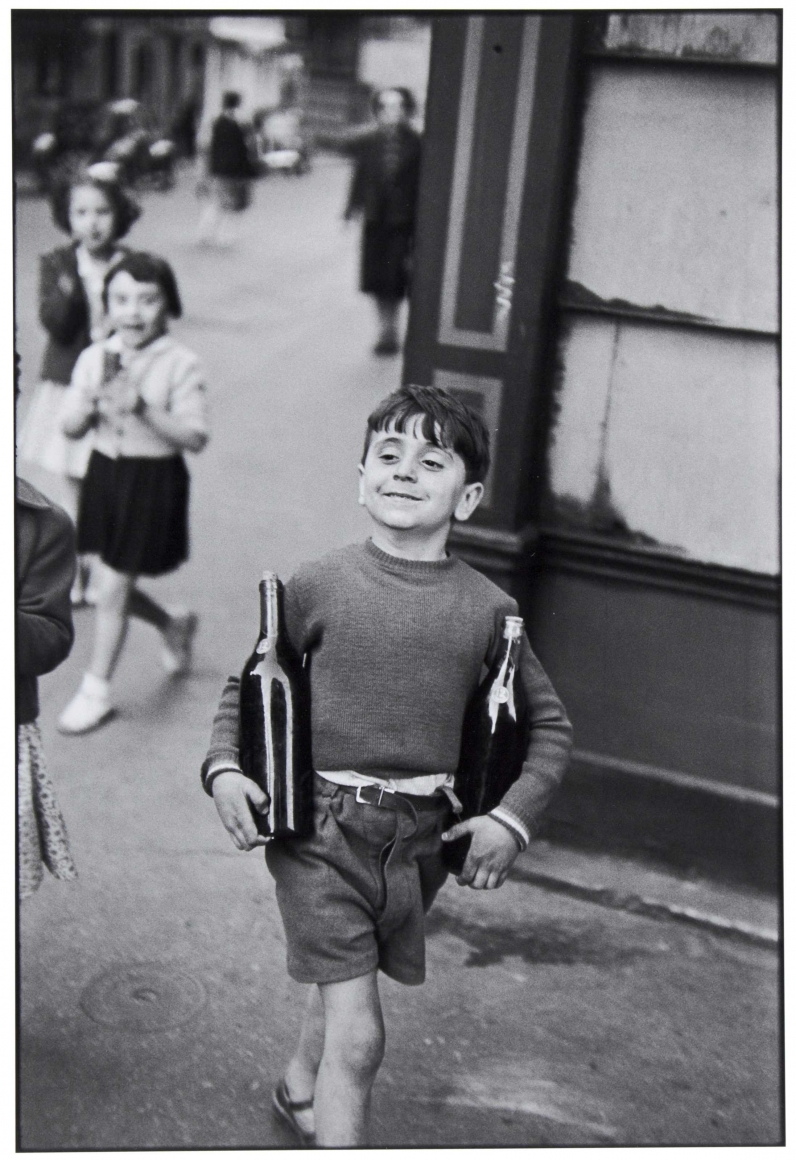
He found the extraordinary in the ordinary. His impact on photography and it being appreciated as an art form is not to be dismissed.
We also have to mention Imogen Cunningham who not only pioneered photography as an art form but also feminism and environmentalism. Cunningham is the pinnacle of what an art practice should be. She used the camera to document nudes, botanicals as well as industrial landscapes.
She cherished and celebrated the body. She shone a light on the naked body that hadn’t been done before. She documented the female form in ways that had previously been discouraged. She captured the beauty in the world around her and shared it with the art community. She also pioneered politically-inspired documentary photography depicting the aggressive industrialization she saw.
Cunningham’s work still remains just as relevant and popular today as it did years ago. This is just a small selection of a whole host of photographers who pioneered and revolutionized photography both as a practice and as a recognized art form.
A quick browse through their work and you’ll see how photography has evolved and grown. They have triggered a canon of thinking and seeing. Get inspired. There has never been an easier time to start taking photography seriously.